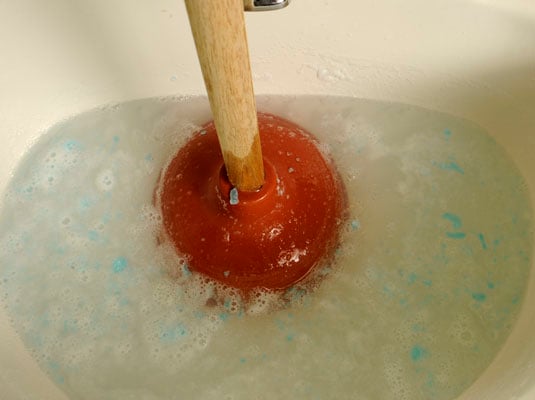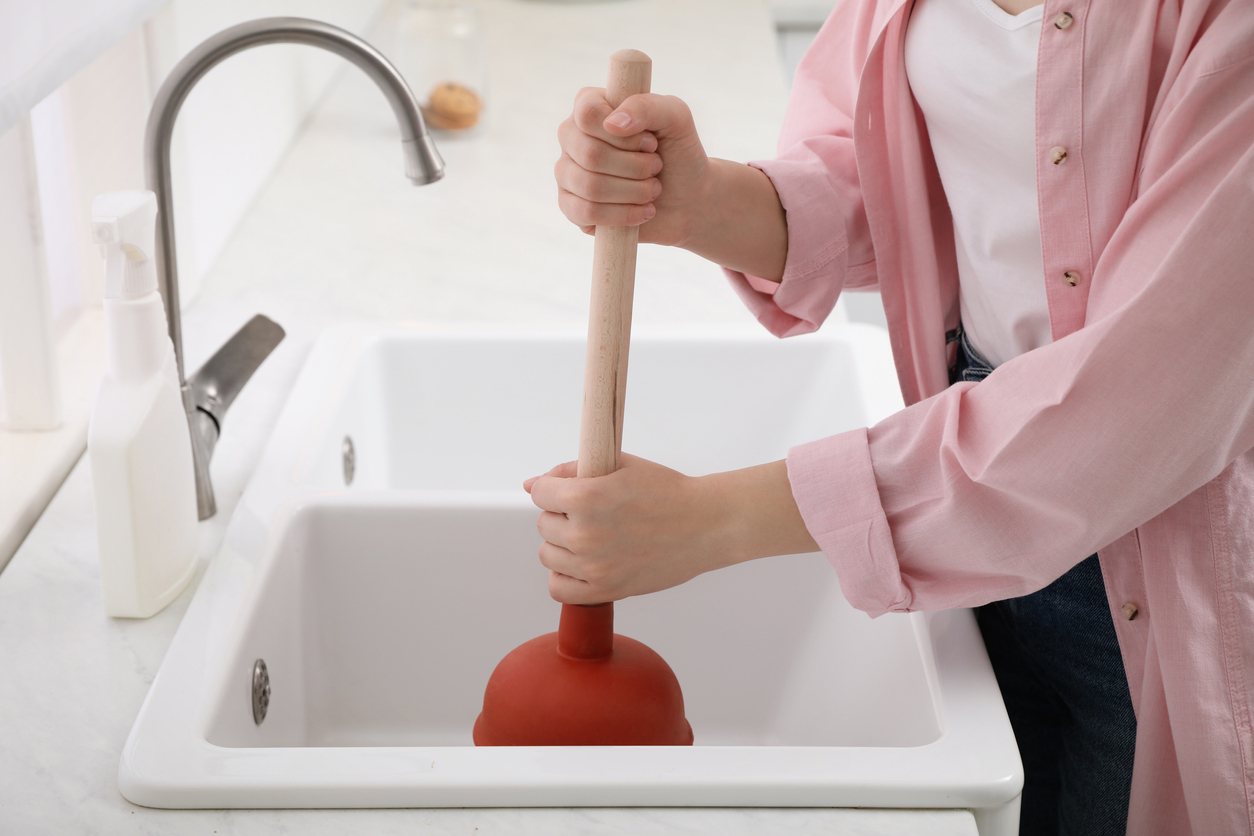We've noticed this article about Tips on How to Effectively Use a Plunger down the page on the web and concluded it made sense to talk about it with you in this article.

Intro
Proper maintenance of household drains is necessary for protecting against obstructions and making sure smooth water circulation. Among the key tools in every house owner's toolkit is the plunger, together with different drain cleaners developed to tackle stubborn clogs effectively. This article discovers exactly how to use bettors and drain cleansers efficiently to maintain your drains moving freely.
Section 1: Recognizing Plungers
Sorts of Plungers
There are a number of sorts of plungers offered, each designed for different kinds of drains pipes and blocks. One of the most typical kinds consist of cup bettors, flange bettors, and accordion plungers.
Exactly How Plungers Job
Bettors work on the principle of producing stress and suction to remove obstructions. When properly used over a drain, they create a vacuum that can take out particles or separate clogs.
Picking the Right Bettor
Selecting the right bettor relies on the kind of drain and the nature of the obstruction. Cup bettors are ideal for sinks and bathtubs, while flange plungers are much better suited for bathrooms due to their layout.
Typical Mistakes with Bettors
Avoiding these errors guarantees effective plunging: inappropriate seal around the drainpipe, not enough force, and unclear surrounding debris.
Area 2: Utilizing Plungers Properly
Preparation
Before diving, guarantee the bettor covers the drainpipe totally and creates a limited seal. Clear any kind of noticeable particles around the drainpipe opening.
Method
Begin with gentle plunging movements to develop suction. Boost stress slowly, utilizing a consistent rhythm. Repeat as needed till the drainpipe removes.
Troubleshooting Tips
If diving does not work, attempt changing the seal, applying oil jelly for a far better seal, or utilizing a various kind of bettor.
Section 3: Recognizing Drain Cleaning Company
Types of Drainpipe Cleaners
Drain cleansers can be chemical or enzymatic. Chemical cleaners utilize strong chemicals to dissolve clogs, while chemical cleaners make use of natural enzymes to break down raw material.
Exactly How Drainpipe Cleaning Company Work
Chemical cleansers react with clogs to liquify them, while enzymatic cleaners break down natural materials like hair and grease without damaging pipes.
Safety and security Factors to consider
Constantly put on handwear covers and eye defense when using chemical drain cleaners. Guarantee sufficient ventilation and adhere to supplier guidelines meticulously.
Eco-Friendly Alternatives
Think about using vinegar and cooking soda or enzyme-based cleaners for green choices that are more secure for pipelines and the atmosphere.
Section 4: Making Use Of Drain Cleaning Company Successfully
Application Techniques
Put chemical cleaners directly right into the drainpipe opening. Allow them to help the advised time before purging with hot water. Chemical cleansers ought to rest over night.
Safety measures
Prevent blending various sorts of cleansers, as this can generate poisonous fumes. Never utilize chemical cleansers in conjunction with a plunger, as splashing can occur.
Dealing With Stubborn Blockages
For consistent clogs, take into consideration utilizing a plumbing snake or calling a professional plumbing to avoid damages to pipelines.
Final thought
In conclusion, recognizing exactly how to make use of plungers and drain cleaners efficiently is essential for maintaining healthy plumbing systems. By picking the right devices and methods, homeowners can tackle minor blockages and prevent major pipes concerns down the line.
How To Properly Use A Plumbing Snake To Clear Drains
When any drain clogs in our home arise, we tend to gravitate toward the plunger and little else. In cases where the plunger and its vacuum-created pressure are not able to clear clogs, many immediately move to harmful chemicals or simply call their plumber to fix the issue.
we’re happy to help with all drain cleaning needs and concerns. This includes informing you on a few other home remedies you may have at your disposal for minor to moderate clogs, one of which is the use of a plumbing snake. Many people have never used one of these before – let’s go over the steps to take when your drain clogs and you have a plumbing snake available.
Attempt Plunger Use
The first step here, as we noted above, should indeed be to grab your plunger when you notice a drain clog and attempt to resolve it this way. If you’re unsure how to use a particular type of plunger, our plumbers can answer any questions you have. If this doesn’t do the trick, however, you move on to the snake.
Locate And Prepare Snake
A plumbing snake is a metal or plastic device that’s generally about a quarter of an inch thick. It’s design with significant extensions, meant to reach down into your clogged drain and push the clog out. Snakes also contain drain augers that will latch onto and push stubborn blockages.
If your plunger doesn’t clear a clog, locate your snake and bring it to the drain in question. We also recommend keeping a bucket nearby to collect the clog once you pull it out, plus we’d advise wearing goggles and possibly protective gloves.
Feed Snake
Once you’re ready to go, feed the snake slowly down the drain, using the crank device it comes with to keep it moving until it finds the clog. Once this happens, much of the clog will be latched onto the coil so you can pull it out, while the rest will simply break up and flow downward.
Detach Debris
Remove the snake slowly from the drain, and once you’ve done so, pick off any debris that’s stuck to the coil. This is another area where wearing gloves is a must.
Flush Drain
Finally, take a few minutes to ensure the snake has done its job correctly. If you’ve been using it on a toilet, flush the toilet a couple times and make sure everything flows well. If you’ve used it on a different drain, flush it with some room temperature water.
https://www.mybuddytheplumber.com/blog/how-to-properly-use-a-plumbing-snake-to-clear-drains/

Application Techniques
Put chemical cleaners directly right into the drainpipe opening. Allow them to help the advised time before purging with hot water. Chemical cleansers ought to rest over night.
Safety measures
Prevent blending various sorts of cleansers, as this can generate poisonous fumes. Never utilize chemical cleansers in conjunction with a plunger, as splashing can occur.
Dealing With Stubborn Blockages
For consistent clogs, take into consideration utilizing a plumbing snake or calling a professional plumbing to avoid damages to pipelines.
Final thought
In conclusion, recognizing exactly how to make use of plungers and drain cleaners efficiently is essential for maintaining healthy plumbing systems. By picking the right devices and methods, homeowners can tackle minor blockages and prevent major pipes concerns down the line.
How To Properly Use A Plumbing Snake To Clear Drains
When any drain clogs in our home arise, we tend to gravitate toward the plunger and little else. In cases where the plunger and its vacuum-created pressure are not able to clear clogs, many immediately move to harmful chemicals or simply call their plumber to fix the issue.
we’re happy to help with all drain cleaning needs and concerns. This includes informing you on a few other home remedies you may have at your disposal for minor to moderate clogs, one of which is the use of a plumbing snake. Many people have never used one of these before – let’s go over the steps to take when your drain clogs and you have a plumbing snake available.
Attempt Plunger Use
The first step here, as we noted above, should indeed be to grab your plunger when you notice a drain clog and attempt to resolve it this way. If you’re unsure how to use a particular type of plunger, our plumbers can answer any questions you have. If this doesn’t do the trick, however, you move on to the snake.
Locate And Prepare Snake
A plumbing snake is a metal or plastic device that’s generally about a quarter of an inch thick. It’s design with significant extensions, meant to reach down into your clogged drain and push the clog out. Snakes also contain drain augers that will latch onto and push stubborn blockages.
If your plunger doesn’t clear a clog, locate your snake and bring it to the drain in question. We also recommend keeping a bucket nearby to collect the clog once you pull it out, plus we’d advise wearing goggles and possibly protective gloves.
Feed Snake
Once you’re ready to go, feed the snake slowly down the drain, using the crank device it comes with to keep it moving until it finds the clog. Once this happens, much of the clog will be latched onto the coil so you can pull it out, while the rest will simply break up and flow downward.
Detach Debris
Remove the snake slowly from the drain, and once you’ve done so, pick off any debris that’s stuck to the coil. This is another area where wearing gloves is a must.
Flush Drain
Finally, take a few minutes to ensure the snake has done its job correctly. If you’ve been using it on a toilet, flush the toilet a couple times and make sure everything flows well. If you’ve used it on a different drain, flush it with some room temperature water.
https://www.mybuddytheplumber.com/blog/how-to-properly-use-a-plumbing-snake-to-clear-drains/

I am just very interested by and I really hope you enjoyed reading my entry. Are you aware of anybody else who is intrigued by the subject? Please feel free to share it. We value your readership.
Call Today